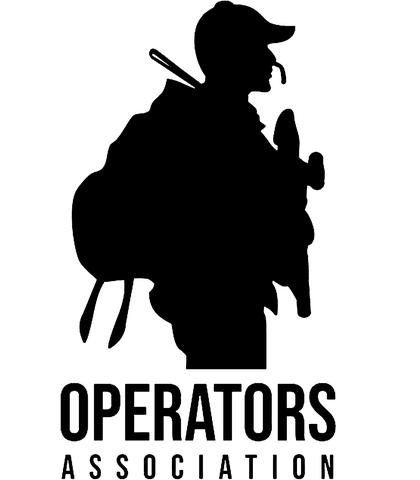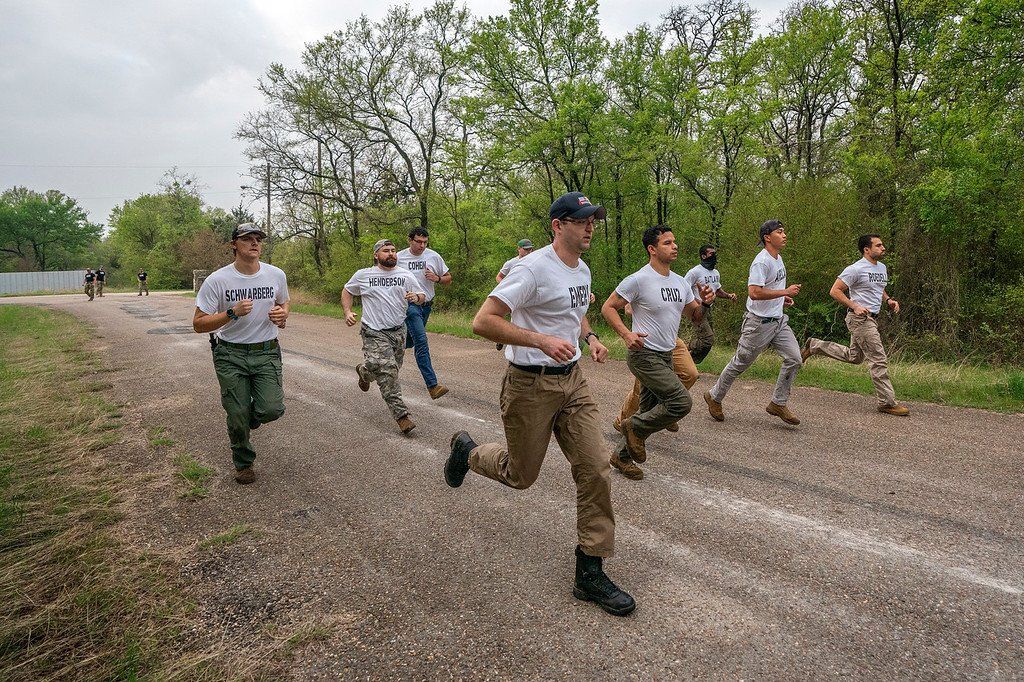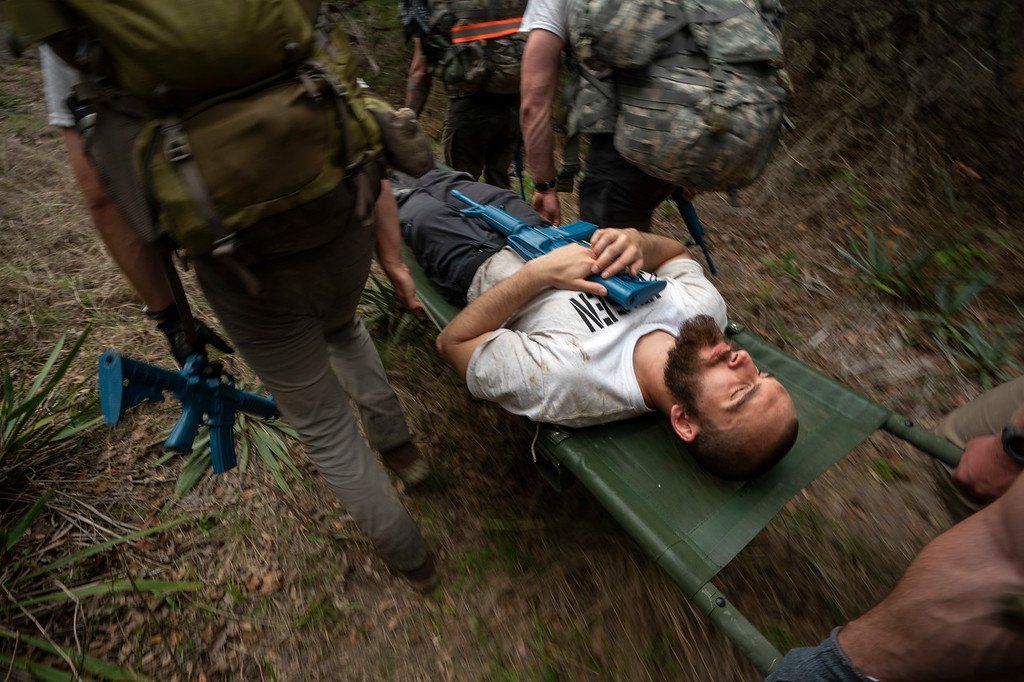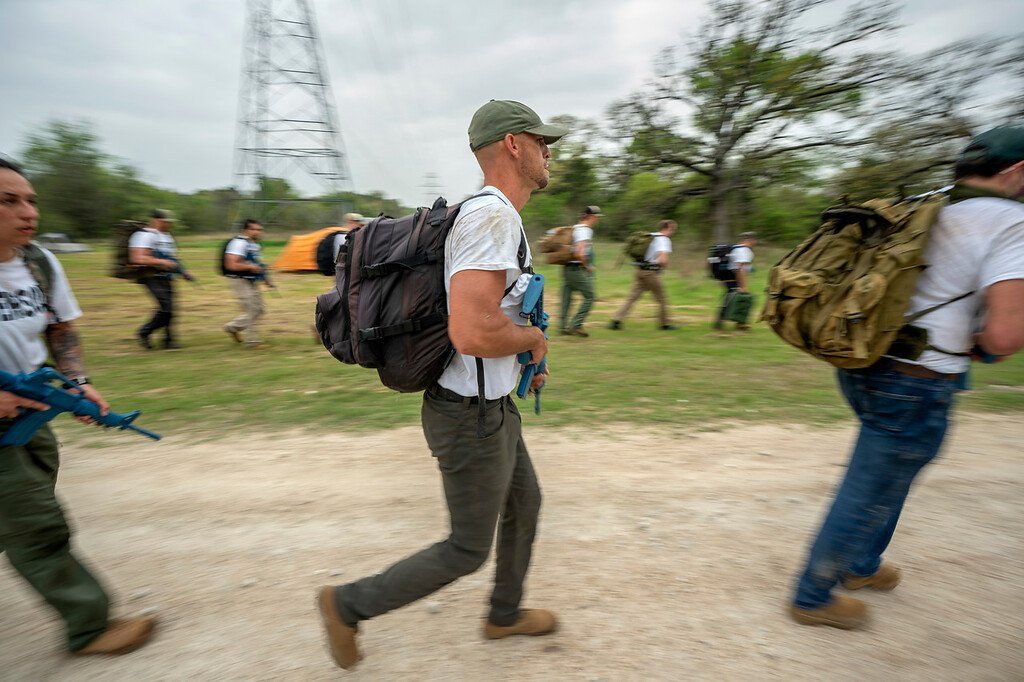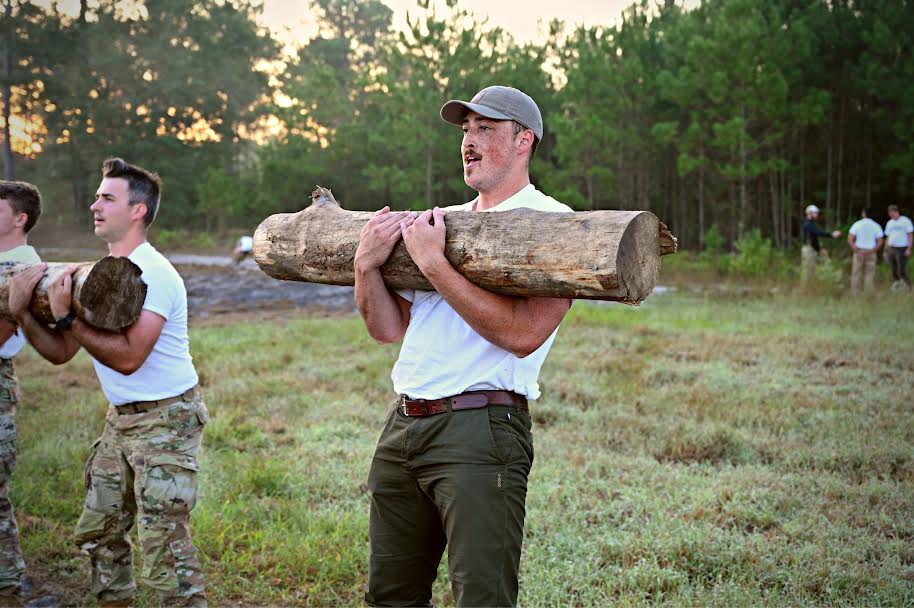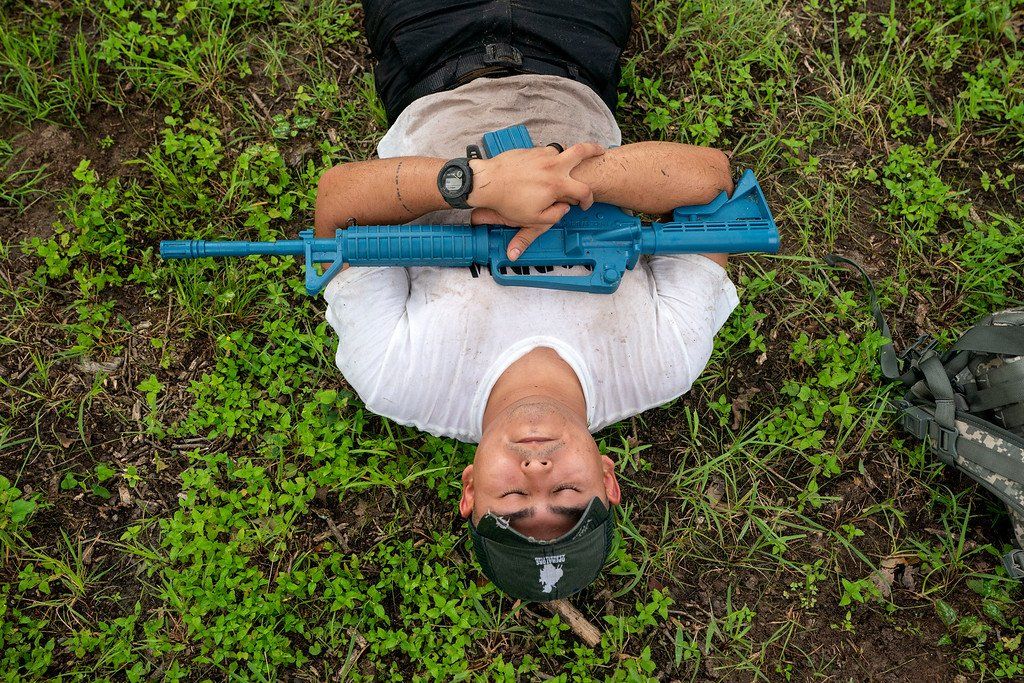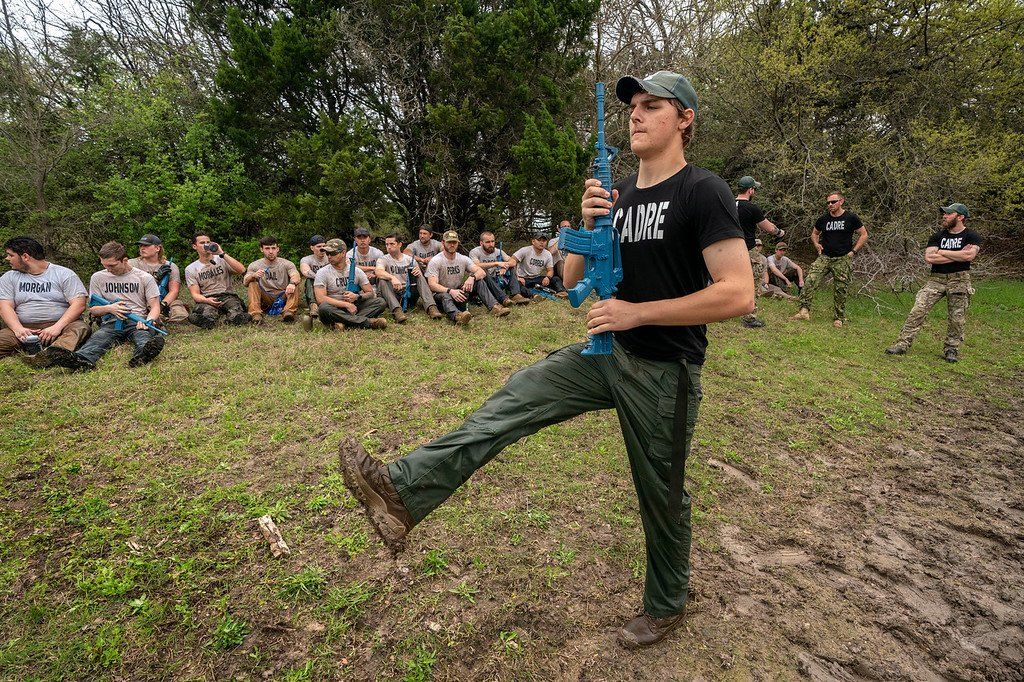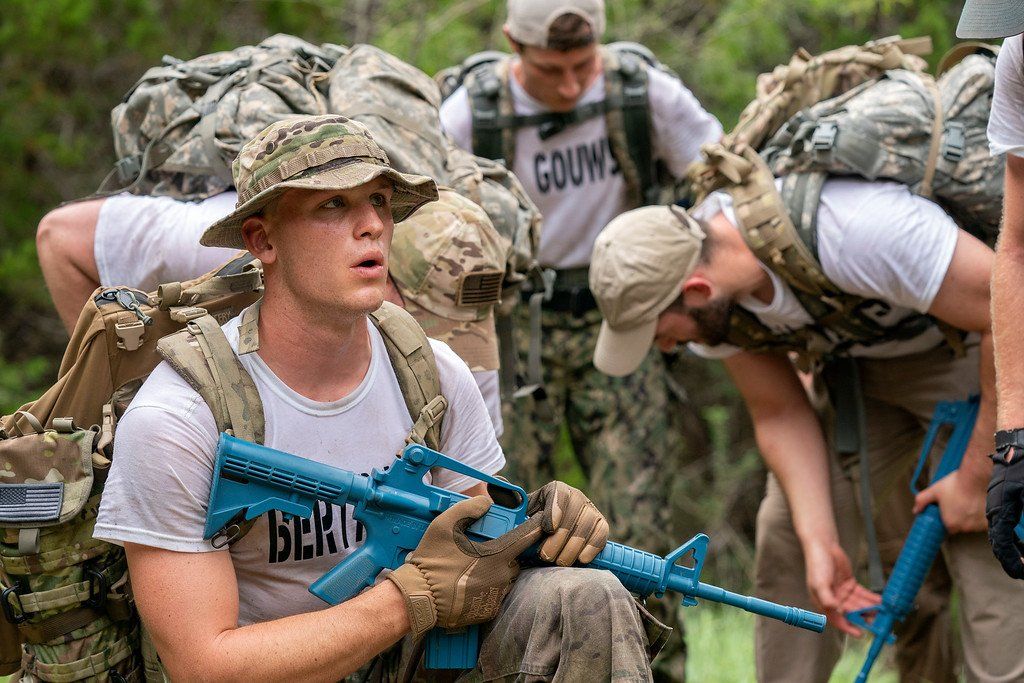
October 26, 2021
Gym machines and free weights are excellent ways to build muscle and strength. But when you're busy working or traveling, you won’t always have the luxury of accessing a weight room. When that happens, you need proven exercises that you can use anytime, anywhere to stay on the path and achieve your PT goals. Enter: army calisthenics. In this OA guide, we’ll introduce the top 5 military workout movements that you should apply to your daily physical training. We’ll also show you variations for each exercise that you can use to make your calisthenics workouts more challenging. The Squat – Full-Body Power If you had to choose one army calisthenics exercise to do for the rest of your life, it would be the squat. From its endless variations to its full range of motion, the squat targets your entire posterior chain . The result? One of the most complete and effective bodyweight exercises. Squat Variations Weighted Squat: Throw on a weighted vest or tactical plate carrier to immediately make your squats more challenging. Jump Squats: A simple but effective way to build power. Slowly reach the bottom of your eccentric movement, pause for a moment, then explode up into a jump. Pistol Squats: Begin your squatting motion and lift one leg off the ground. Keep it elevated and stay balanced as you complete the squat. The Push-Up – Strength and Explosiveness The push-up is an iconic army calisthenic exercise – for a good reason. Although it seems simple, a properly executed push-up is an excellent movement for building upper-body strength and explosiveness. Push-ups are also a key metric in SOF PT tests, so remember to include a few sets into your daily workouts. Push-Up Variations Already a push-up master? Good news: you can easily make this army calisthenics exercise more difficult with a few minor tweaks. Incline Push-Ups: Put your legs on an elevated surface to shift more weight onto your upper body. Diamond Push-Ups: Move your hands from the traditional shoulder-width placement and put them close together. This variation is excellent for targeting your triceps. Just be careful if you have an existing shoulder injury – diamond push-ups put increased strain on your shoulder joints. Wide Hand Push-Ups: The opposite of diamond push-ups, wide hand push-ups target your chest and put less emphasis on the triceps. The Plank – Head-to-Toe Endurance Few bodyweight exercises will help you build endurance like planks. This army calisthenics exercise requires you to activate your entire anterior chain to stabilize and balance your body. Simply get into the plank position and hold it as long as possible – the endurance gains will come. Plank Variations Oblique Plank: Turn to your side and support your body weight on one arm. Tighten your glutes and lower-side obliques, and make your chest perpendicular to the floor. Up and Down Planks: Get into plank position. Alternate between supporting your body weight on your forearms (traditional plank) and your hands (push-up position). Mountain Climber Planks: Get into a push-up position plank. Drive your knees to the chest in a running motion. The Situp – Core Stability A PT test classic, the situp is a key army calisthenic exercise for developing your core strength and stability. Whether you do them fast for explosiveness or slow and controlled for endurance, few abs exercises can beat the situp. As such, it should be a part of your daily army calisthenics PT routine . Situp Variations V-Ups: Lay flat on your back. Lift both your legs and torso to resemble a V-shape. Slowly return back to laying flat in a controlled manner. Scissor Kicks: Lay flat with your back on the ground. Lift your legs and rapidly move them up and down in a scissor motion (as if you were swimming). Hollow-Body Holds: Balancing on your tailbone, lift your legs and torso off the ground. Breathe, stabilize, and hold this position for time. The Burpee – Killer Cardio Do you like to suffer? Great. Few army calisthenics exercises are more strenuous and demanding than burpees. They’re an excellent way to supercharge your endurance training or take your HIIT workouts to the next level! Burpees start easy but quickly become a nightmare as you get past a dozen or so reps. The full-body activation – from your pecs and shoulders stabilizing to your legs exploding – will put you into overdrive. Burpee Variations Push-up Burpees: Do a pushup at the bottom of the movement for an extra intensity boost. High-Knees Burpees: Drive your knees to your chest when you jump to increase explosiveness and make the exercise more challenging. One of the best ways to improve your physical performance fast is to start an OA workout program. All of our training plans are proven to be effective and are created by special forces cadre who know what it takes to join the teams. If you need to enhance your physical performance in record time, you can depend on an OA workout program to get you the results you’re after. Don’t delay – browse our workout programs now .

October 24, 2021
Unless you live on the Alaskan frontier, you have nearly instant access to food at your local supermarket or drive-thru burger chain. As such, food and nutrition are usually things we take for granted in the modern United States. Despite this, food is a basic need for survival and one of the most crucial aspects of becoming a SOF operator. In this OA guide, we’ll show you three ways to eat a more tactical, combat-ready diet. We’ll also look at how the military units of our international allies plan their diets to optimize their combat efficacy. Follow the tips in this guide, and you’ll immediately notice a difference in how you feel and perform. Eat Nutrient Dense Foods Not all foods are created equal. People often have trouble distinguishing between calorie-dense and nutrient-dense foods when designing their diets. Just because a portion of food gives you a lot of macronutrients like fat, carbohydrates, and proteins, that doesn’t mean it’s giving you all of the other nutrients and minerals your body needs to perform. Take some time to learn how to read nutritional food labels and apply this knowledge the next time you’re grocery shopping. Prioritize finding a balance between foods that give you calories and foods that give you the other nutrients you might be missing (like calcium, magnesium, potassium, and vitamins). Become a “Skinny Cat” To explain this next point, we have to travel across the Atlantic Ocean to one of America’s closest historical allies: France. With the nation effectively being a global superpower since the middle ages, it’s no surprise that the French know a thing or two about war. From Napoleon’s conquests to their role in the American Revolutionary War, France rarely backs down from a fight. The European nation boasts some of the best trained and equipped military units in the world. But one of them is unique: the French Foreign Legion (FFL). Although the Legion is not technically a special forces unit, its soldiers are globally regarded as some of the toughest, meanest, and most capable warriors in the world. Since its conception in 1831 as a way to recruit hardened criminals into the military (violent and disposable with nothing to lose – an unethical but effective formula for a soldier), the Legion has been on the front lines of nearly every French conflict. And with so much battle experience, the FFL has also created a unique philosophy for soldier diets: the concept of le chat maigre (translation: the skinny cat). If you compare the typical French Legionnaire to any other country’s soldier, you’ll immediately see a difference in their physiques. While most militaries encourage their warriors to build muscle and develop a strong physique, the Legion has the opposite approach. Legionnaires are usually thin, scrappy, and agile (hence, a skinny cat) – prioritizing agility and endurance over strength. This difference in physique is caused by the soldiers’ low caloric intakes (breakfast usually includes a 10km run followed by a slice of bread and cup of black coffee) mixed with some of the most intense daily PT in the world. Although this isn’t a great approach for building muscle in the long term, the idea of training hard while on a low-calorie intake has its advantages in a combat scenario. If the Legion’s supply chain breaks down, its soldier’s bodies are already accustomed to fighting while low on fuel. In contrast, if a soldier is used to eating 3000+ calories/day and his logistics fail, he’ll be catatonic. Does this mean you should stop eating? No. What it means is that there is more than one approach to getting in shape for the special forces. If your body isn’t predisposed to building muscle , or you struggle to reach the caloric surplus you need to gain weight, you might want to consider becoming an agile, scrappy “chat maigre”. Plan Your Eating Strategically If you want to be a SOF operator, you must take the special forces mindset with you everywhere – not just into the field. This includes strategically planning your food intake to maximize your operational efficacy. Eating like a warrior is about more than consuming the right foods . It also involves taking a tactical approach to what, when, and how you eat your food. Eating a well-balanced, enjoyable diet is crucial to sticking to it in the long term. In fact, the Center for Disease Control highlights enjoying your food as a key tenant of healthy eating. Despite this, there is a time and plate for everything. For example, say you’re one day away from attending an OA Crucible event. You know what you’re in for – 12 grueling hours of simulated special forces selection. With that being the case, your last meal before the Crucible probably shouldn’t involve gas station sushi or food from that new restaurant in town. Instead, your strategic approach should be to eat foods your body is used to and that you know won’t cause any adverse effects. Testing new things can wait until after the Crucible. If you eat the right foods at the wrong time, you’re eating the wrong foods! Take responsibility for your success by taking a tactical, strategic approach to your diet. If you’re looking for more ways to live like an operator, join OA as an Aspiring Operator today. You will meet a community of hundreds of like-minded people who will help you with everything from workouts to nutrition and staying accountable for your progress! Click here to enlist in OA now !

October 19, 2021
As upright-walking animals, humans depend on our balance more than we often realize. Any movement from walking to the fridge to fighting requires a significant amount of balance and coordination by our bodies. Although most of us take our balance for granted, the process behind staying upright and stable is incredibly sophisticated. From collecting impulses from the eyes, joints, muscles, and ears, to applying the data and making micro-adjustments to keep the body balanced, the brain is constantly working to keep you standing. With balance being such a crucial aspect of movement, the question remains, what can you do to improve your stability? In previous OA guides, we showed you how to stabilize your joints and prepare your body for rucking . For this guide, we’ll focus solely on the specific exercises that you can do to improve your balance and physical adaptability. The Two Principles of Balance Before we can delve into the specific exercises for building balance, we must understand the two principles behind human stability. Without going into too much scientific detail, there are two elements that you can train to improve your balance. The first is strength. This is the ability of your joints, muscles, and ligaments to support your weight and keep you stable throughout your movements. Without enough strength, your body cannot perform under the stresses of the exercises you perform. The second element you can train is reactivity. This is the amount of time that it takes your brain to process the balance impulses we mentioned previously and make adjustments. The better your reactivity, the quicker your body will be able to balance itself and adapt during dynamic movements. For example, when a child is first learning how to walk, their brain isn’t very adept at calculating the balance data and responding fast enough to keep the toddler upright. As we get older, the balance pathways in our brain get more clear-cut and responsive. Exercise 1: Cone Touches This exercise focuses on improving the reactivity portion of your balance. To perform the cone touch drill, you will need five cones/pylons. Stand in an open area and spread out the markers 1ft away from you in a semicircle (at the 12 o'clock, 1:30, 3 o'clock, 4:30, and 6 o'clock positions). Standing with your left or right side towards the cones, balance on the leg further away from the markers (eg. if you stand with your right side toward the cones, balance on your left leg) – this is your neutral position. To perform the exercise, use the non-standing leg to tap the 12 o’clock cone and return to the base position. Repeat this movement for each cone – try to stay balanced on one leg throughout the drill. Once you get the hang of this movement, you can increase the difficulty by moving the cones farther away from you or standing on a cushioned surface that offers less stability. Exercise 2: Balance Calisthenics For improving your balance strength, few exercises can beat balance calisthenics. If you commonly do bodyweight exercises, chances are you’re already familiar with squat variations like pistol squats and squat holds. To make these movements work your balance, perform them on a low-stability surface. If you’re at home, you can use a padded mat or thick carpet. If you have access to gym equipment, performing these exercises while standing on an inverted Bosu ball will yield huge balance gains. Note that you may need to decrease your weight or use stability aids (like TRX bands or holding onto the wall) when first starting these exercises. Exercise 3: Explosive Balance Movements Explosive or plyometric balance movements combine the two elements of balance into one exercise. Drills like one-legged box jumps or lateral jumps are excellent movements for supercharging your balance capabilities. Your body must have balanced strength to take off and land during the exercises. Then, your balance reactivity must take over to keep you stable and centered throughout the movement. Exercise 4: Passive Balance Improvement Improving your balance doesn't always have to be something you put time aside for. In fact, you can significantly improve your stability by performing small exercises throughout the day. For example, even small things like standing on one leg while brushing your teeth can pay huge dividends for your balance in the long term. Other passive balance exercises include temporarily replacing your home office chair for an exercise ball, using only one leg while lowering yourself into a chair, and even taking a few minutes to balance on one leg while blindfolded (this is much more challenging than it seems – your eyes provide the brain with crucial data about your physical orientation). Having the fitness it takes to become a SOF operator is about more than passing PT tests. Your body must also be able to withstand the stresses of selection and deployment and adjust rapidly to dynamic environments. With so many factors affecting your physical performance, it can be challenging to discern whether your training sessions are effective. That’s why we teamed up with SEAL Commander, Greg DeLuca, to create our OA training programs. Each workout regimen is curated to give you the skills and attributes you need to dominate selection and get into the teams. Check out our workouts page to get started today.
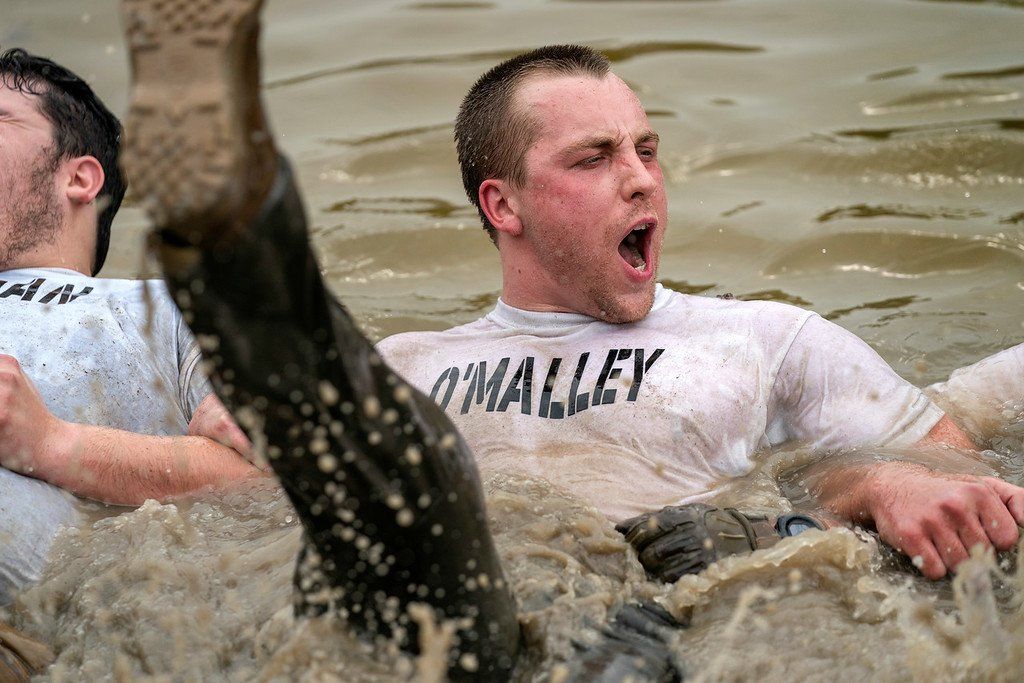
October 11, 2021
Flexibility and mobility training are some of the most crucial aspects of your physical performance. Despite this, many special forces workouts either gloss over stretching as an afterthought or skip it entirely. In this OA guide, we’ll show you how to get in shape for the military by optimizing your mobility training. Why You Need to Stretch Stretching might not be as engaging, fun, or impressive looking as lifting weights or running. But it’s a crucial part of unlocking your full potential in terms of physical performance. While there are countless benefits to mobility training, here are the three main reasons why stretching must become a staple in your fitness routine. Flexibility Equals Power One thing that all high-level athletes – from professional fighters to Olympic sprinters – have in common is flexibility. Even in sports where extreme joint mobility isn’t a key part of the competition (like powerlifting or swimming), mobility training is paramount. Why? Because flexibility equals power. Here’s how it works: Your muscles are like elastic bands. When you want to move, the muscle puts tension on your skeleton and causes it to change position. Muscular tension is great when used to aid a movement. But the opposite is true if the muscle is pulling against the action. Optimally, you want to maximize the muscular pressure assisting your movement while minimizing the muscular tension pulling in the opposite direction. Imagine you are throwing a punch. To generate maximum striking power, you want every muscle in your hips, core, chest, and arms to generate force in the direction of your punch. What you don’t want is your back muscles (those opposed to the movement) to be so tense that they pull power away from the strike. When your muscles are stiff and inflexible, it’s like having a permanent resistance band attached to your limbs. At a certain range of motion, your body begins working against you, and you lose power exponentially. Mobility training is the solution to this problem – the more flexible your muscles are, the less they inhibit your ability to generate power. Injury Prevention Whether you’re running, rucking, lifting, or fighting, accidents happen. When you slip, stumble, or fall, your limbs often go in some unfortunate directions. If you want to prevent muscular injuries, your body must have the flexibility to adapt and facilitate these unplanned movements. The more flexible you are, the more your body can shift without getting injured. Think of it as the difference between ice and water. Ice is stiff and immobile – if you hit it with a hammer, it will shatter. But if you hit water with the same hammer, it will simply shift, adapt to the impact, and then return to its previous position. If you want to get in shape for the military, staying injury-free is a must. Faster Recovery The final benefit of stretching is reduced recovery times after hard workouts. We go into greater detail about recovery in another OA guide, How to Recover From Tough Trainings , but here’s the gist of why mobility helps recovery: Stretching temporarily increases blood flow to your muscles. This blood carries nutrients that aid in repairing damaged tissues and also drains lactic acid from your muscle. Mobility training also has the added benefit of helping you release knots and reduce the effects of DOMS (delayed onset muscle soreness). The 3 Types of Stretching Although all stretches have the same end goal – increasing the mobility of your muscles and connective tissues – there are different ways you can stretch, each with its benefits and drawbacks. The three main types are static, dynamic, and ballistic. Static Stretching This is what most people see when they imagine stretching. You choose a position and hold it for 30-60 seconds at a time. Static stretches are best done as a cool down after your workout. Common positions include butterfly pose, touching your toes, and the quadriceps stretch. Pros Safe and easy to do Hundreds of positions and stretching progressions for all flexibility levels Relaxing Cons Cooldown your muscles. Not useful as a pre-training stretch. Slow and boring – it’s tempting to skip static stretching. Dynamic Stretching A form of active stretching, dynamic stretches involve movements that stretch the muscles to their full range of motion. They are best done during warmups as they keep your muscles warm and mobile. Common dynamic stretches include deep lunges, hip openers/closers, and high kicks. Pros Stretch muscles faster than static stretches Engaging and active Cons Uncomfortable for beginners Slight risk of hyperextension and injury Ballistic Stretching These are the most controversial forms of stretching. Some people swear by them, but the consensus is that ballistic stretching should be avoided. These movements involve getting into a static stretch position and then bouncing slightly to get a stretch. Ballistic stretches are marginally more effective at increasing flexibility than static and dynamic stretches, but carry a high risk of pulling a muscle. Pros Rapid improvements in flexibility More engaging than static stretches Appealing for beginners Cons The high risk of injury outweighs potential benefits Optimizing your physical performance is a crucial aspect of succeeding at special forces selection. If you want to get in shape for the military, you must stick to a proven and effective exercise schedule. That’s why we created our Operators Association workout programs. All of our training regimens are built and curated by former special forces operators who know what it takes to succeed in the teams. Visit our workouts page to start training today !

October 4, 2021
Muscles are trained at the gym, but they grow in the bedroom. Rest is one of the most crucial aspects of developing consistent, long-term gains in your physical and mental performance. If you are constantly exhausted, you cannot operate at your capacity. In the modern armed forces, rest has gone from an optional privilege to a key part of military strategy. The better a soldier, sailor, airman, or Marine can sleep, the faster he can recover and get back into the fight. Being properly rested also increases morale, focus, and the rate at which people learn and recall new concepts. In an old OA guide, we showed you how to start your day like a Green Beret by establishing powerful morning routines. This time, we’ll give you the military techniques to help you wind down and get your sleep when it counts – even when you’re stressed. Control Your Breathing The first step to falling asleep is to get your breathing under control. One of the main ways sleep affects your body is by decreasing your heart rate and the other metabolic functions of your body. With that being the case, it’s nearly impossible to fall asleep with an abnormally fast heart rate. If your heart is beating fast, whether because of stress or physical exertion, you must steady your breathing to gradually lower your heart rate. The breathing method that Navy SEALs have developed for overcoming stress and anxiety is called box breathing. The pattern for this exercise follows a simple rhythm: Inhale 4 seconds, Hold Breath 4 seconds, Exhale 4 seconds, Hold Breath 4 seconds While box breathing isn’t a sleep-specific breathing exercise, it helps you relax, wind down, and lower your heart rate as you try to fall asleep. Get on Schedule The military is great at many things, but one thing they truly excel at is staying on schedule. From selection to training courses and overseas deployment, the armed forces always operate on a schedule. From the moment an aspiring soldier, sailor, airman, or Marine joins the ranks as a recruit, their days are planned from the second they wake up to the moment they fall asleep. Aside from helping develop discipline, routine, and organization, living on a consistent schedule will help you get to sleep. Your body’s circadian rhythm is responsible for determining when you should start falling asleep and when it’s time to wake up. It primarily does this by altering the release of melatonin (the sleep hormone). When you live on a schedule, consistently rising and sleeping at the same time every day, your body will already be primed for sleep when you hit the rack. Have an Active Day Your body needs rest to recover from your daily training and workload. With that being said, you must give your body a reason to rest. If you’ve been lounging around the entire day, you’re unlikely to feel sleepy – even if you’ve been awake for a considerable number of hours. If you want to give your body the activity it needs to help you fall asleep, you must get at least one hour of moderate-high intensity training every day. This can mean lifting weights, running, performing calisthenics, or starting an OA workout guide ( click here to browse our curated training programs ). Alternatively, if you’re too busy to put an hour aside for training, check out the other guide we made about the Top 4 Quick Workouts for Busy Days . The Military Sleep Method At the height of the Cold War, the United States and USSR tried everything to get the upper hand. This led to them performing some strange – and usually ineffective – scientific experiments (including attempts at brainwashing, as well as hiding ballistic missiles within glaciers). Despite this, there were a couple of breakthroughs that we can still apply to improve our performance today – one of which is a sleep technique. The US Navy Pre-Flight School wanted to figure out how to help fatigued and stressed pilots fall asleep fast in any environment. If airmen could essentially sleep on command, they could conveniently rest between missions and outperform enemy pilots. To make this plan a reality, the school constructed a method that would help its airmen fall asleep in less than two minutes. After six weeks of practice, they were even able to doze off after drinking coffee and with gunfire sounds in the background. The military sleep method is all about getting relaxed as quickly and efficiently as possible. Here’s how you do it: Relax your entire face, including the muscles inside your mouth. Relax your shoulders and arms. Let your hands drop to the side of your body. Exhale, relaxing your chest and abdomen. Relax your legs, calves, and feet. Imagine your body sinking into the bed. Clear your mind for 10 seconds by imagining a relaxing scene or repeating a mantra like “don’t think.” Continue Step 5 until you fall asleep. It should only take about 2 minutes at most. With consistent practice, you can start falling asleep in under 30 seconds! Knowledge is power. In selection, even the slightest extra bit of knowledge or strategy can put you ahead of the crowd and help you become an operator. There’s only one problem: in today’s world of viral videos and quick tips, it’s challenging to determine whether or not the advice you find is legitimate. That’s why we created the Operators Association – to help aspiring, future SOF operators achieve their goals and get the guidance they need to succeed. Get started today. Browse our memberships page to find out what we can do for you!
